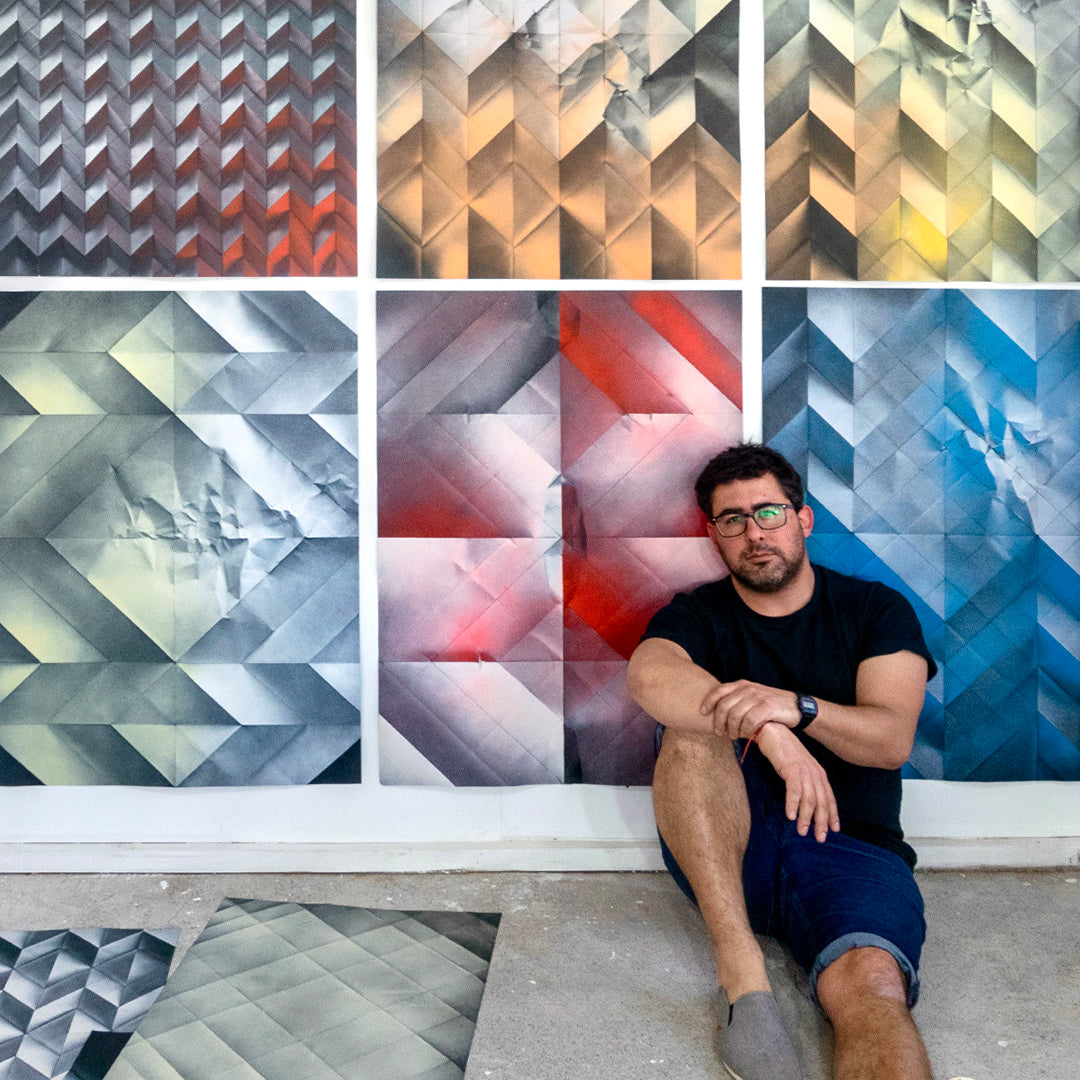Leo Shallat was born and raised in Seattle, Washington. The self taught artist started painting and calligraphy when he was 15 years old. In 2017 he was awarded a year-long scholarship to study European Gothic Calligraphy with world renowned calligraphy master Paul Antonio Attong which began his journey into working full-time as an artist.

How did you get into art?
My first introduction to art was stumbling into graffiti when I was young. Graffiti eventually led me to be curious about the world of art and letters and over time brought me to more of the abstract painting that I work on now. In college I experimented with a few different styles of work but I remember the day I found Niels Shoeman’s book Calligraffiti and learned about the Calligraffiti ambassadors. That was the first time there was an art movement or a school of art that I deeply resonated with and wanted to be part of. That sent me on a journey to learn calligraphy formally while sticking with a lot of the style I developed doing more abstract wildstyle graffiti pieces.
How would you describe your style? What makes your work special?
I would describe my work as abstract painting with calligraphic techniques. I started working with deconstructed letterforms and that gave me a whole new language to explore. What makes my work special to me is that my work is very approachable and isn’t overly intellectual. I’m usually not trying to say something specific. My work is very spontaneous and intuitive, I’m trying to capture a feeling like flow or a crescendo, or grace. To me, these are more so feelings that I think language often falls short of meaningfully articulating. At the end of the day everyone will interpret the work differently because it’s abstract but this is what I love about it.

How do you go about developing your work?
Over time my work has developed through my studio practice. The cycle usually begins with smaller works on paper, using those to experiment with colors, compositions, and different ideas I want to explore. I usually make at least one small paper piece every day and call them brush meditations. From there I’ll take the small pieces that I really like and expand on them, bringing them to medium and large canvas pieces. If there's an idea or color palette that really intrigues me I’ll continue working with it bringing it to larger scale murals.
In 2020 my art style shifted a lot. I remember being overwhelmed by the winter and feeling a lot of hopelessness about the state of the world. I started to look at my pieces and while I appreciated the chaotic, explosive energy of them, they didn’t match how I was feeling at the time. I wanted to explore the total opposite of the spectrum so instead of trying to fit as many brush strokes and detail as possible I started to take just a single brush stroke but really focus on composition, color, and negative space. I was trying to capture a sense of peace, or stillness that had been absent from my earlier work. That shift in approach is something that I’m still developing today.

Who or what influences you?
I’m influenced a lot by everyday life and the creative system I’ve built for myself. I get a lot of time in the studio to listen to all kinds of audio books, lectures and interviews. I just like to learn in general but I gravitate towards a lot of philosophy, self development, science, and health when it comes to feeding my brain. I think also conversation and spending time with friends. I’m pretty social and have a lot of meaningful friendships that all shape how I show up in the world. Those interactions are always influencing me.
Make us curious. What is planned next?
I’m currently working on a large body of work for a show later this year. It’s going to be my first larger solo and will be a synthesis of all the different painting/sculptural techniques I’ve been developing the past two years. Other than that I’m developing some 3d printed sculptures as well as my first series of limited edition prints.





